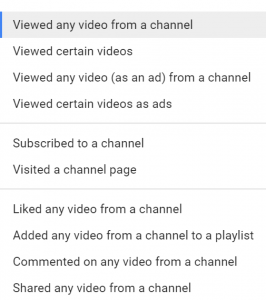A website is an excellent source for marketing and branding a small business. A website is not only the online storefront of a business but it’s the center point of a company’s online presence. Additionally, it can be the first impression someone has of the business. Further, the homepage is the most viewed page and the foundation of a small business’s website. On a hierarchy scale, it is the website’s very first page. Therefore, a small business homepage should represent the business, brand, key services/products, and any other key additional information about the website.
The following includes key practices for a small business homepage:
1) Clearly Identify Your Business.
When an online searcher lands on a SMB homepage, they should immediately be able to identify who the business is and what they do. It is important to remember the vastness of the internet and how easy it is for a visitor to leave and go somewhere else. If an online searcher can not easily determine who or what the business is, then they most likely will bounce. Some basic things to consider:

- Logo. Display a high quality image of the logo in the top header. If the website has a colored background, then make the logo transparent.
- Images. Use images that show what the business is and what it offers. It is a huge mistake to use images that are stretched to fit dimensions or contain low quality visibility. High quality images have a positive impact on the design and credibility of the business’s website.
- Tagline text. Tell visitors about the business services and the location in big and bold text.
Ex: “Plumber in Dallas, Texas”. “Criminal Attorney in San Jose, California”.
- Title Tags. Tell search engines what the business website is about. The homepage should never say the default “Home”. Good SEO practices include priority keyword, city, and brand.
2) Calls to Action.
Many people will use a website just to find the phone number and where the business is located. A good SMB website has several calls to action to make it as convenient as possible for a visitor to contact a business and or purchase a product. Homepage calls to action practices for a SMB website include:
- Phone Number. Make it obvious and easy to find and in multiple places throughout the homepage. (Top, Side Widget, Footer)
- Address. Common placement is in the Footer. Other locations include top or side widget of the website.
- Contact Us. The obvious location in navigation menu. Typically, the silo furthest to the right.
- Forms. Contact Us forms on the homepage makes it more convenient for the visitor to contact the business through the website.
- Offer. Have a deal? Offering something free? Having a sale? Display it on the homepage!
- Chat. Studies show that having a chat tool can help increase leads.
3) Easy Navigation.
For a website with multiple pages, a well structured navigation strategy must be an absolute priority. A business with multiple services, products, or content, etc., all this information should be easily found and easy to navigate to on the homepage. A well-structured homepage navigation for a SMB website should have:
- Navigation Menu. Placed either in the Header area or top left widget area.
- Secondary Navigation Menu. Many visitors scroll to the bottom after landing on a page. Having a secondary navigation menu in the Footer area is a common and efficient practice for businesses.
- Icons. Using icons, helps visitors click on visuals. These are ideal for social media links, directories, products, etc.
- Links. Using text and image links on the homepage is a user friendly practices.
4) Show Credibility.
Usually web browsers are doing some sort of research to determine who they want to buy from. Therefore, a business that includes exemplary content and shows reliability on the homepage may provide a level of trust for the visitor. A SMB website that has credible content consists of:
- How Long? When was the company established? If the SMB has been in business for a longtime, then stating this in the first sentence
“Established in….” can increase creditably.
- Post Awards. Has the business ever been awarded as one of the top companies in a local magazine, newspaper, a review site, or blog? Share this!
- Testimonials. It’s always wise to have a Testimonial page, but having one or two testimonials somewhere on the homepage is always a good practice.
- Directories. Include trusted directory links. Does the business have an A+ rating with the BBB? Do they have positive Yelp reviews? Then display a linked icon to the directory website.
- Quality and Modern. An old website, with low quality images, or is poorly developed may influence visitors to go somewhere else.
5) Design of Homepage.
A modern and visually appealing website will establish credibility to the visitors. Equally important, a user friendly homepage will keep people on the website, allow them to easily navigate, and will decrease bounce rates.
- Visual. Design and colors that represent the business, industry, and brand will have impact on the overall performance of the website.
- Template. Being unique in a busy room can help a you standout. However, unique homepages aren’t always user-friendly. It’s not always necessary to re-invent the wheel, choosing a common template platform is not a bad thing.
- Flow. Does the layout of the website make sense to a visitor? Using a level of hierarchy is a good practice. When designing a flow, a business should remember that people and search engines read content: top to bottom, left to right.
6) Extras.
- Maps. Displaying a map of the brick and mortar will make your business easy to find.
- Media. Using a video of the business can help with engagement.
- Mobile. More and more people prefer mobile devises when browsing the internet. A responsive website should fit all mobile platforms.
- Content. Optimized text content explaining the business and clearly what it offers, has a positive influence on search engine rankings.
(182)







